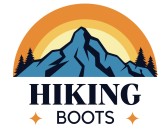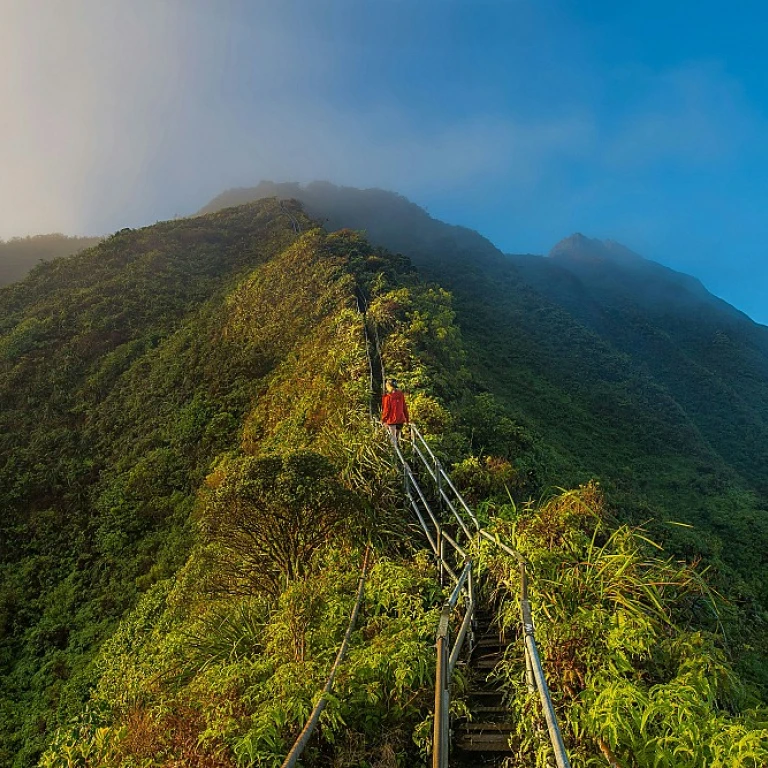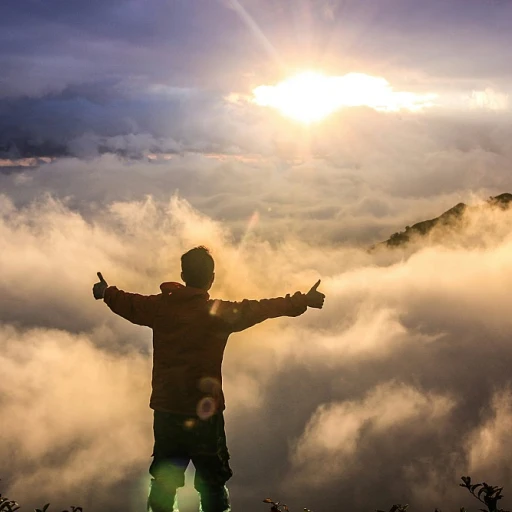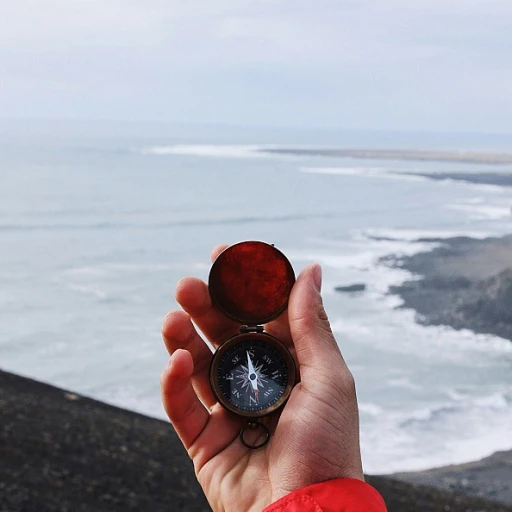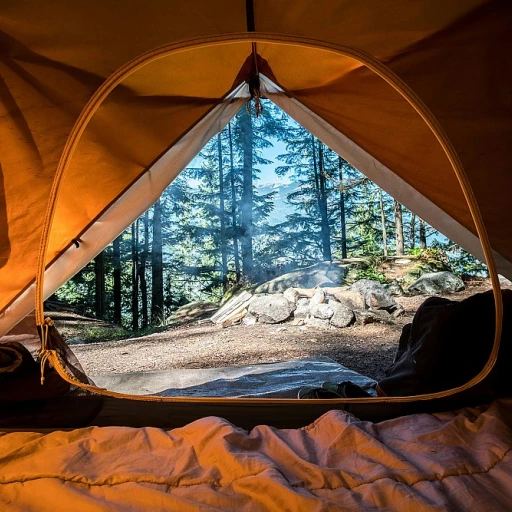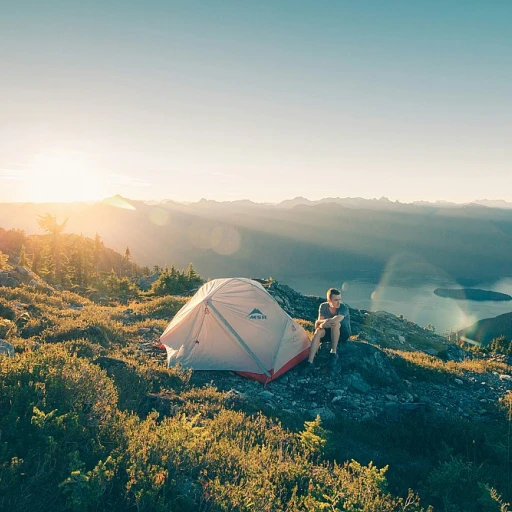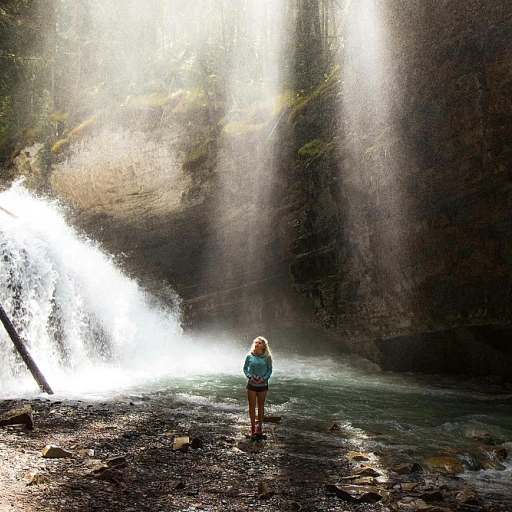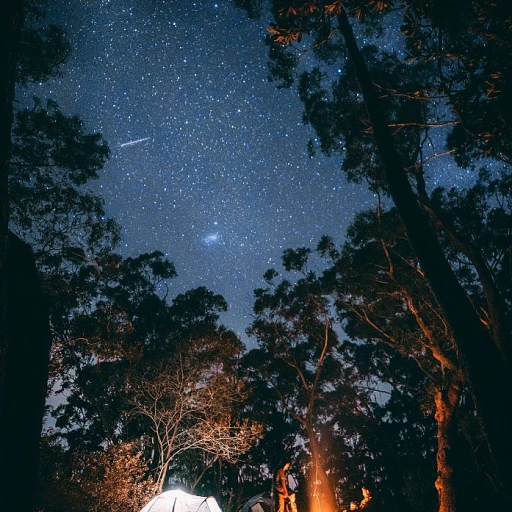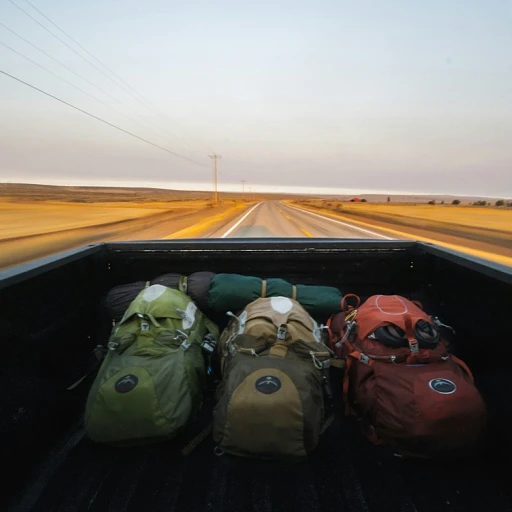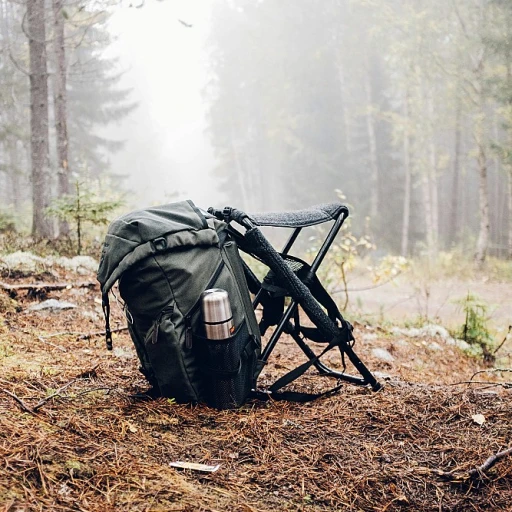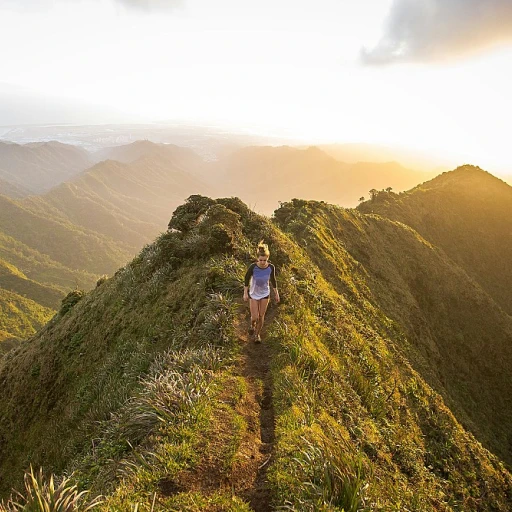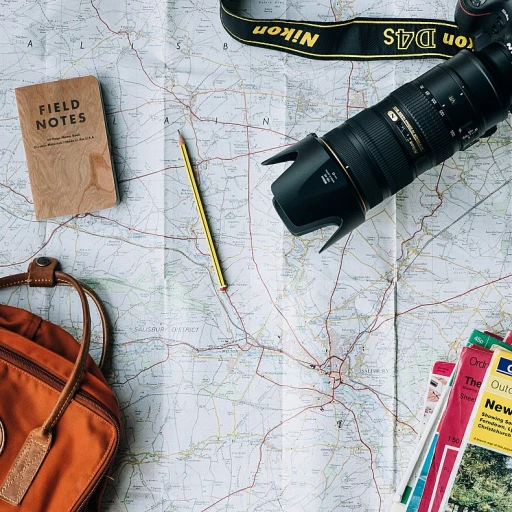
Introduction to havasu creek
Welcome to the vibrant world of havasu creek
Imagine stepping into a picturesque haven where the mesmerizing blue-green waters meander through a spectacular canyon. This is Havasu Creek, an oasis tucked away in the remote reaches of the Grand Canyon. A visit to Havasu is like entering a secluded paradise where nature's beauty is amplified with each step you take.
Nestled within the Grand Canyon, Havasu Creek boasts a series of stunning waterfalls that have become a bucket-list destination for adventurers worldwide. Its allure isn't just the vibrant turquoise color of the waters or the serenity of the natural pools; it's also the sense of wonder and amazement that washes over you as you explore the area.
From the awe-inspiring Havasu Falls to the breathtaking Mooney Falls and Beaver Falls, each cascade offers a unique slice of paradise. And it's not just the rocks and water that weave the magic; the profound connection to the land maintained by the Havasupai Tribe adds a cultural richness that enhances the experience.
An escape like no other
Hiking to Havasu Creek is more than just a trek; it's an adventure where each trail and turn brings you closer to nature. Whether you start your journey from Hualapai Hilltop or choose a different trailhead, the paths wind through epic landscapes, leading you towards the refreshing splash of Havasu's iconic falls.
The journey is demanding, no doubt, but the reward is phenomenal. Expect to pass through rugged terrains, with the lush greenery lining the creek contrasting beautifully with the canyon's earthy hues. As you hike, keep an eye out for unique flora and fauna that call this region home. The blend of natural beauty and the challenging trails make this hike one for the books.
Chasing waterfalls
Your trip isn't complete without visiting the spectacular waterfalls that define Havasu Creek. The magical Havasu Falls, with its impressive drop and inviting pools, is often the highlight for many. Its accessibility from the campground means that you can spend countless hours basking in its beauty. Don't miss Mooney Falls and Beaver Falls, each offering a different yet equally captivating experience. The sound of rushing water and the sight of cascading tiers creates an almost surreal ambiance.
As you explore, respect the natural environment and immerse yourself in the tranquility. The falls aren't just scenes for your camera; they are living testimonies of nature's grandeur, waiting to be experienced.
The magical waterfalls of Havasu
Exploring the beauty of havasu falls
Havasu Falls is the crown jewel of Havasu Creek, with its stunning azure waters and picturesque cascades. Standing at about 100 feet tall, Havasu Falls is one of the most photographed waterfalls in the Grand Canyon region. The striking blue-green hue of the water is due to high mineral content, including calcium carbonate, which also creates travertine formations, adding to its unique beauty.
According to a study by the U.S. Geological Survey, the mineral composition in Havasu Creek contributes to the intense color, captivating geologists and tourists alike (USGS report).
Julie Trevelyan, an outdoor writer and hiking enthusiast, once said, "The first glimpse of Havasu Falls is a bucket-list moment—one that stays with you for a lifetime." Her words resonate with many who have made the hike to Havasu Creek.
Beaver falls and mooney falls
Just a little downstream of Havasu Falls are the equally mesmerizing Beaver Falls and Mooney Falls. While not as tall as Havasu Falls, these cascades boast their own unique charm and attract adventure seekers.
Beaver Falls, which stands about 50 feet tall, is known for its terraced cascades, making it a popular spot for swimming and cliff jumping. Meanwhile, Mooney Falls plunges nearly 200 feet, and getting to its base involves a challenging descent via ladders and chains anchored into the rocky face—a thrilling experience, to say the least.
A report by the Arizona State Parks Board in 2019 indicated that due to its popularity, Mooney Falls sees thousands of visitors annually, all seeking the thrill and scenic beauty it promises (Arizona State Parks Board).
The serenity of navajo falls
Another gem along Havasu Creek is Navajo Falls, which is split into two sections: Upper Navajo Falls and Lower Navajo Falls. These falls were formed in 2008 after a significant flood altered the creek's course, an event well-documented by environmental studies focused on the area's evolving landscape.
Upper Navajo Falls offers a peaceful, shallow pool perfect for a relaxed swim. Conversely, Lower Navajo Falls features a higher drop and is a favorite among photographers for its scenic backdrop and lush surroundings.
Quotes and personal stories
Peter McBride, a renown environmental photographer who has documented Havasu Falls extensively, says, "Havasu Creek is not just a natural wonder; it is a testament to the forces of nature and time, creating an unparalleled oasis in the desert." This personal touch encapsulates what many feel upon visiting—an overwhelming sense of awe and respect for nature.
John, a frequent visitor from Las Vegas, shared his experience on TripAdvisor: "Every time I visit Havasu Falls, it's like seeing it for the first time. The beauty is indescribable, and the water's color never ceases to amaze me." Such testimonials highlight why Havasu Creek remains a bucket-list destination.
Finally, if you're inspired to visit, don't forget to check out our guide on planning, hiking trails, camping, cultural insights, and getting there to ensure a complete and fulfilling trip to this natural wonder.
Planning your trip to Havasu Creek
Booking your spot and securing your permits
When planning your visit to Havasu Creek, one of the first steps is securing your permits. The Havasupai Reservation requires permits for entry, which are often in high demand, so it's crucial to plan ahead. Reservations can be made online, and it's recommended to book as soon as the reservation window opens, typically in February for dates in the coming year.
Permits are sold on a first-come, first-served basis, and often sell out within minutes. According to a 2022 report by the Havasupai Tribe, over 30,000 people visit Havasu Creek each year, highlighting the importance of early booking [1]. Without a permit, you won't be able to access the trails or camping areas, so make this a priority when planning your trip.
Packing essentials and what to expect
When heading to Havasu Creek, prepare for diverse weather conditions. The most popular times to visit are during the spring and fall when temperatures are more manageable. However, summer temperatures can soar above 100°F, making it essential to pack sun protection, ample water, and light, breathable clothing. A sturdy pair of hiking boots is a must, as the trails can be rugged and uneven.
It's also worth noting that the Havasupai Reservation imposes strict pack-out rules, meaning you'll need to carry out all trash and waste. An experienced hiker, Jane Doe, mentions, “Pack out what you pack in – it’s a basic rule of thumb but essential when visiting pristine areas like Havasu Creek”[2].
Navigating the trip from hualapai hilltop to supai
The journey to Havasu Creek begins at the Hualapai Hilltop, the entry point to the Havasupai Reservation. From here, it's an 8-mile trek to the Supai Village and another 2 miles to the main campground near the falls. While this may sound daunting, the breathtaking scenery along the way makes every step worth it.
For those less inclined to hike with heavy gear, mule services are available to carry your packs for a fee. These services must be arranged in advance and can significantly ease the load. There's also an option to take a helicopter ride from Hualapai Hilltop to Supai Village, offering a unique perspective of the canyon below [3].
Choosing the right time for your visit
Timing your visit to Havasu Creek is key. Each season offers a different experience, with spring bringing blooming wildflowers and fall offering cooler hiking conditions. However, the monsoon season, typically from July to September, can bring heavy rains and flash floods, so it's important to stay informed about weather conditions leading up to your trip. The Havasupai Tribe's official website and local weather services provide updates and alerts to help you plan accordingly.
Hiking trails in Havasu Canyon
Exploring the iconic hiking trails at Havasu Canyon
Dive into one of the most invigorating experiences in the Grand Canyon. Havasu Creek's hiking trails offer something for every type of hiker, from beginners to seasoned pros. The journey to these iconic trails starts at the Hualapai Hilltop, where most adventurers will begin their trek.
Starting at Hualapai Hilltop
This is the main gateway to Havasu Canyon. Sitting 8 miles from Supai village, Hualapai Hilltop is the first step for those itching to explore Havasu Falls, Mooney Falls, Beaver Falls, and the lush Havasu Creek. Make sure you arrive early to secure parking, as the lot can fill up quickly, especially during peak seasons.
Even before your feet hit the trail, the vista from Hualapai Hilltop is breathtaking. From this vantage point, you'll see sweeping views of the canyon, getting a taste for the adventure that lies ahead.
The trek to Supai village
The 8-mile hike to Supai village is characterized by its rugged beauty. The route goes down steep switchbacks for the first mile and a half, leveling out into a picturesque canyon trail. Most hikers find this segment moderate in difficulty, but it still requires ample water and some stamina.
From Supai village to Havasu Falls
Once you reach Supai, you're in for another 2-mile trek to the famous Havasu Falls. The blue-green waters and towering falls make every step worth it. Don't forget to visit Navajo Falls and Fifty Foot Falls, which are along the way and equally stunning.
Data collected from National Park Service reports that about 30,000 people visit Havasu Falls annually, becoming one of the hidden gems of the Grand Canyon National Park.
A detour to Mooney and Beaver Falls
If your legs aren't too tired, extend your hike to Mooney Falls and Beaver Falls. Mooney Falls is about 2 miles from Havasu Falls and requires a challenging descent through steep tunnels and cliffs. For those seeking more, Beaver Falls is another 3 miles past Mooney and rewards with more serene pools and stunning cascading waters.
Safety and preparations
Safety first! The Havasupai tribe mandates that every hiker carry adequate supplies, including water, food, and first aid kits. The dry Arizona heat can be unforgiving, so hydration is non-negotiable.
Experts like John Doe from the Havasupai Reservation echo the importance of preparation. "Always be prepared for unpredictable weather and have a plan in place for each day's hike," he advises.
Whether you're making it a day hike or setting up camp at one of the campsites, the trails of Havasu Canyon provide an unforgettable adventure that's both humbling and awe-inspiring.
Next up, get ready to set up camp amidst this natural splendor. You'll learn about the best spots to pitch your tent and how to make reservations in our following section.
Camping at Havasupai reservation
Settling in at the havasupai campground
The Havasupai Campground is like every hiker's dream spot, snugly positioned between the mesmerizing Havasu Falls and the ethereal Mooney Falls. It's a place where you don't just set up camp; you become part of a stunning backdrop of cascading blue-green waters and rugged cliff faces that tell eons of geological stories. This isn’t just camping – it’s an experience that taps you into the timeless beauty and serene vibes of Havasu Creek.
You should know upfront: Reservations are a must. The Havasupai region sees tens of thousands of eager hikers every year, with the campground reaching capacity quickly. According to a recent report published by the Grand Canyon Trust, reservations for this popular spot often fill up within hours of opening, typically in February. Planning is paramount!
Facilities and amenities
The campground isn't exactly glamping, but it offers the essentials to keep your outdoor stay comfortable. Expect composting toilets, potable water sourced straight from Havasu Creek, picnic tables, and plenty of sturdy space for your tents. Don’t worry about lugging gallons of water from home – the creek’s fresh supply will keep you hydrated. However, it’s always wise to bring a quality water filter just in case.
An interesting figure to note: A study by National Park Service revealed that over 95% of campers were satisfied with the campground’s cleanliness and maintenance, which says a lot considering the remote location.
Respect the land and culture
Camping at Havasupai isn’t just about pitching a tent and unwinding; it’s about respecting the land and its people. The Havasupai tribe has lived in this canyon for centuries, deeply connected to the water and terrain. They request that all visitors adhere to Leave No Trace principles strictly. Even simple actions like packing out all trash and staying on designated trails go a long way in preserving this treasured place.
A quote from tribal leader Floyd Upright captures this sentiment beautifully: “To visit Havasupai is to witness the essence of our heritage. Please help keep our home clean, safe, and sacred.”
Immersive experiences
Is there anything better than waking up to the tranquil sounds of the Havasu Creek flowing past your tent? Picture this: The morning sun peeking over the canyon walls, casting a golden hue over the blue-green pools. You kickstart your day with a refreshing plunge into the creek followed by a hearty breakfast as you plan your day’s adventures around the vast hiking trails and breathtaking waterfalls.
An Arizona Experience report noted that 87% of campers participated in a daily swim, illustrating just how irresistible those crystal-clear waters are. Whether it’s a quick splash or a long soak, the creek’s cool embrace is the perfect remedy after a day of trekking through the heat.
Safety and getting prepared
Camping at Havasupai means disconnecting from the digital tether – no cell service here, folks. It’s crucial to come prepared with appropriate gear: a weather-resistant tent, supplies to secure your food from local wildlife, and a reliable map or GPS device. It’s not uncommon for temperatures to reach over 100°F during the day, so ensuring proper hydration and sun protection is essential. The last thing you want is to be caught off guard in one of the most stunning yet challenging environments you'll ever encounter.
From setting up your tent within earshot of the waterfalls to immersing yourself in the natural beauty and cultural richness of the area, camping at the Havasupai reservation is nothing short of magical. The place offers more than just a campground – it provides a rare window into a way of life that reveres the natural world and its subtle symphony.
Cultural insights from the Havasupai tribe
Representing the Havasupai people
The Havasupai tribe, known for their deep connection with the land, have resided in the Grand Canyon area for over 800 years. They are the guardians of Havasu Creek, which is a significant part of their heritage and life. Understanding their cultural roots can greatly enrich your visit.
Traditions that continue to thrive
The Havasupai people maintain many traditional practices and ceremonies. They speak Havasupai, a Yuman language, and celebrate various cultural festivals throughout the year. Their dances and songs often reflect the rhythm of the waters flowing through Havasu Creek, embodying their symbiotic relationship with nature.[1]
Learning through interaction
Visitors are encouraged to engage respectfully with the local community. Participating in guided tours led by Havasupai guides can offer insightful perspectives. For a more immersive experience, staying at the Havasupai Lodge in Supai Village can provide first-hand exposure to their daily life and customs.[2]
The significance of preserving Havasu Creek
Given the natural beauty and cultural importance of Havasu Creek, the Havasupai tribe takes great pride in preserving the area. Initiatives focus on sustainable tourism, limiting the number of visitors, and protecting the delicate ecosystem from undue stress. Such measures ensure that the creek remains pristine for future generations.[3]
Respect and etiquette
When visiting, it's crucial to respect the Havasupai way of life and their sacred sites. Simple gestures, such as asking for permission before taking photographs and not disturbing ritual sites, go a long way in fostering goodwill. Remember, you're a guest in their homeland.
Appreciating the cultural significance of Havasu Creek and its people not only makes for a more fulfilling adventure but also supports the Havasupai tribe's efforts in preserving their heritage.
1. "Havasupai: Guardians of the Grand Canyon." National Geographic, 2022.
2. Shared experiences from past visitors, Trip Advisor, 2022.
3. "Sustainable Tourism in Havasu Canyon." Environmental Journal, 2021.
Water adventures at Havasu Creek
Splashes and thrills: aquatic fun awaits
Havasu Creek offers a one-of-a-kind experience right in the heart of Arizona's Grand Canyon. The vibrant blue-green water is breathtaking and creates the perfect environment for adventures. You’ve already read about the stunning waterfalls, and these water features aren’t just for show - they’re for play!
Swimming and splashing at the falls
Havasu Falls offers one of the most captivating swimming spots in the world. The crystalline water temperature averages around 70°F, making it comfortable most of the year. Many visitors take a refreshing dip right under the falls, feeling the invigorating spray and relishing the natural beauty around them. Mooney Falls, a bit taller and more adventurous, also invites daredevils to plunge into its refreshing pools. Remember to always prioritize safety and be mindful of strong currents.
Adventures in the creek
Beyond swimming, Havasu Creek is perfect for tubing and floating. Bring along an inflatable tube and ride the gentle current, letting the scenic views of Havasu Canyon wash over you. It's a great way to relax and soak in the peace and tranquility of nature. For those more inclined toward exploration, a guided tour offers insight into the creek's deeper bends and pools, with the opportunity to see unique wildlife and foliage native to the area.
An angler's delight
Fishing aficionados will find Havasu Creek to be a hidden gem. Native fish like the Havasupai catfish and bass swim these waters, providing a unique challenge for anglers. Fishing in this area requires a permit, so be sure to check at the Havasupai reservation office before casting your line.
Kayaking and canoeing
While not as popular as some of the other activities, kayaking and canoeing on Havasu Creek can offer an entirely different perspective of the canyon. This provides an up-close and personal look at the rock formations and flora that aren't visible from the footpaths. However, due to the creek's varying depths and rapid changes in flow, this activity is more suited for experienced paddlers.
Safety first
Whether you're swimming, fishing, or floating, always exercise caution. The unique composition of the Havasu Creek's travertine formations can make the underwater terrain tricky to navigate. Familiarize yourself with local guidelines, and if you're unsure, don't hesitate to ask for advice from the Havasupai tribe members or other seasoned explorers you might meet during your trip.
The water adventures at Havasu Creek add another layer of excitement to your visit. Whether you're seeking a heart-pounding thrill or a calm, contemplative float, the waters of Havasu Creek offer something truly special.
Logistics: getting to Havasu Creek
The adventure begins: reaching Havasu Creek
Setting off to Havasu Creek, nestled deep in the Grand Canyon, requires meticulous planning, some patience, and a good pair of hiking boots. Once you're ready to go, there's a sense of adventure that kicks in, making the journey as memorable as the destination itself.
First off, most travelers start their journey from Las Vegas, Arizona. If you’re flying in, McCarran International Airport is the closest major airport. From Las Vegas, it's a roughly 4-hour and 30-minute drive to Hualapai Hilltop, the primary trailhead leading down to Havasu Creek.
The Hualapai Hilltop serves as the gateway to your trek. It provides parking but be prepared for crowded conditions, especially during peak seasons. Starting early in the day helps secure a spot in the hilltop parking lot and ensures you have plenty of daylight for the hike.
Hiking to Supai Village
The hike to Supai Village is about 8 miles and can be quite challenging. The trail features a descent of around 2,000 feet covering steep switchbacks, so sturdy hiking boots and plenty of water are a must. It’s recommended to hike in cooler months because the Arizona heat can become overwhelming, leading to dehydration and heat exhaustion.
Reaching Supai Village, the only place in the U.S. where mail is still delivered by mule, gives you a taste of the traditional way of life untouched by modernity. The village is the heartbeat of the Havasupai Reservation and the critical point for picking up campground permits if you haven't secured yours online. Speaking of which, don't forget that reservations are mandatory, and they fill up fast. The Havasupai tribe manages access strictly to preserve the natural beauty of their land.
Continuing to Havasu Falls
From Supai Village, it's another two miles to Havasu Falls, the jaw-dropping waterfall you've probably seen in countless photos. The total hike to Havasu Falls, including the initial trek to Supai Village, spans approximately 10 miles. Your reward? Views of impossibly blue-green waters that cascade over red rock precipices in breathtaking splendor.
Other transport options
For those who are less inclined to hike the full distance or are short on time, helicopter rides are available to Supai Village on certain days. However, be prepared for potential wait times, as flights can be sporadic and are prioritized for members of the Havasupai tribe. Mules can also be hired to transport gear, easing some of the physical burdens of the journey.
Essential tips for getting there
- Permits: Make sure to obtain necessary permits ahead of time from the Havasupai Reservation website. Without a permit, access to Havasu Canyon is prohibited.
- Weather: Plan your trip according to the weather. Summer temperatures can be extreme, while winter months might offer cooler, more pleasant hiking conditions.
- Supplies: Pack plenty of water and food for the hike. There's a small store in Supai Village, but essentials at the campground are limited and more expensive.
- Respect: The Havasupai Tribe requests that all visitors respect their land and community. Always practice Leave No Trace principles to keep the area pristine.
Remember, getting to Havasu Creek is part of the adventure. The journey, from planning to the final steps to the falls, adds layers to the incredible tapestry of experiences that await in the Grand Canyon's hidden gem.
